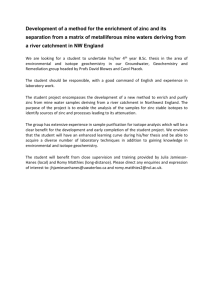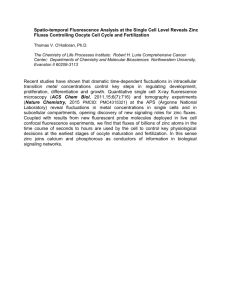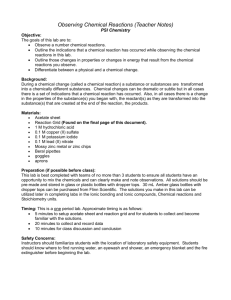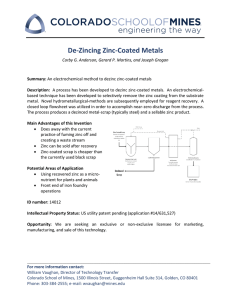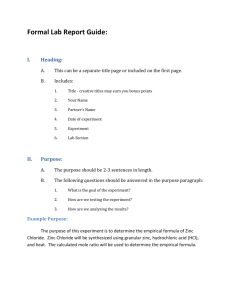Zinc
advertisement
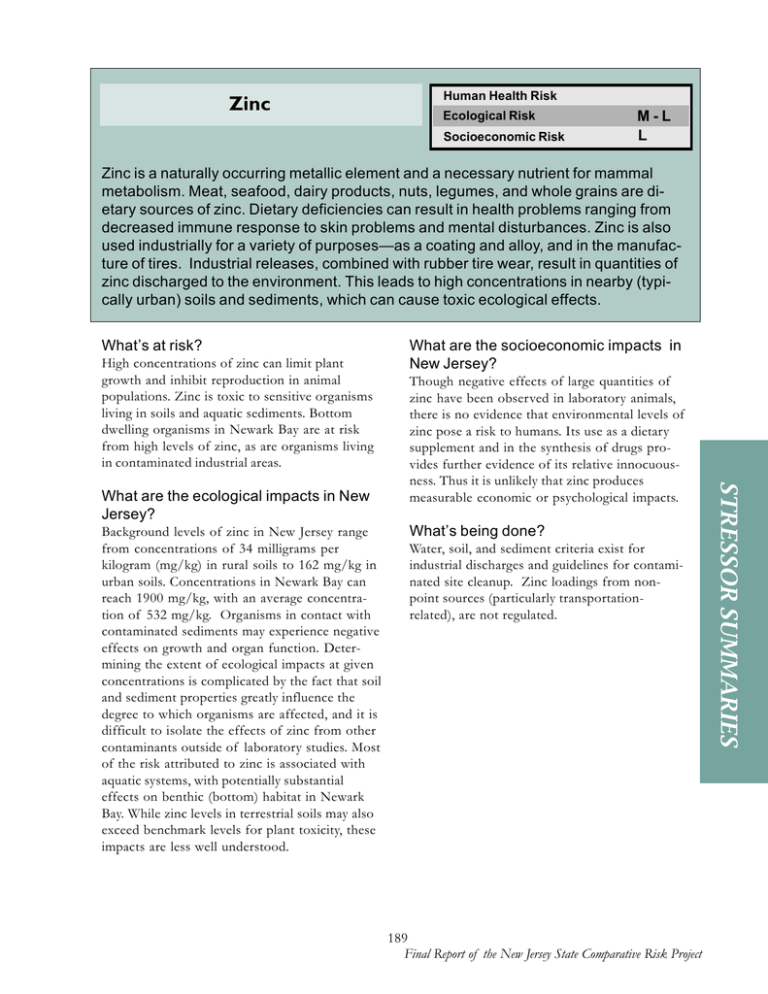
Zinc Human Health Risk Ecological Risk Socioeconomic Risk M-L L Zinc is a naturally occurring metallic element and a necessary nutrient for mammal metabolism. Meat, seafood, dairy products, nuts, legumes, and whole grains are dietary sources of zinc. Dietary deficiencies can result in health problems ranging from decreased immune response to skin problems and mental disturbances. Zinc is also used industrially for a variety of purposes—as a coating and alloy, and in the manufacture of tires. Industrial releases, combined with rubber tire wear, result in quantities of zinc discharged to the environment. This leads to high concentrations in nearby (typically urban) soils and sediments, which can cause toxic ecological effects. What’s at risk? High concentrations of zinc can limit plant growth and inhibit reproduction in animal populations. Zinc is toxic to sensitive organisms living in soils and aquatic sediments. Bottom dwelling organisms in Newark Bay are at risk from high levels of zinc, as are organisms living in contaminated industrial areas. Background levels of zinc in New Jersey range from concentrations of 34 milligrams per kilogram (mg/kg) in rural soils to 162 mg/kg in urban soils. Concentrations in Newark Bay can reach 1900 mg/kg, with an average concentration of 532 mg/kg. Organisms in contact with contaminated sediments may experience negative effects on growth and organ function. Determining the extent of ecological impacts at given concentrations is complicated by the fact that soil and sediment properties greatly influence the degree to which organisms are affected, and it is difficult to isolate the effects of zinc from other contaminants outside of laboratory studies. Most of the risk attributed to zinc is associated with aquatic systems, with potentially substantial effects on benthic (bottom) habitat in Newark Bay. While zinc levels in terrestrial soils may also exceed benchmark levels for plant toxicity, these impacts are less well understood. Though negative effects of large quantities of zinc have been observed in laboratory animals, there is no evidence that environmental levels of zinc pose a risk to humans. Its use as a dietary supplement and in the synthesis of drugs provides further evidence of its relative innocuousness. Thus it is unlikely that zinc produces measurable economic or psychological impacts. What’s being done? Water, soil, and sediment criteria exist for industrial discharges and guidelines for contaminated site cleanup. Zinc loadings from nonpoint sources (particularly transportationrelated), are not regulated. 189 Final Report of the New Jersey State Comparative Risk Project STRESSOR SUMMARIES What are the ecological impacts in New Jersey? What are the socioeconomic impacts in New Jersey?


